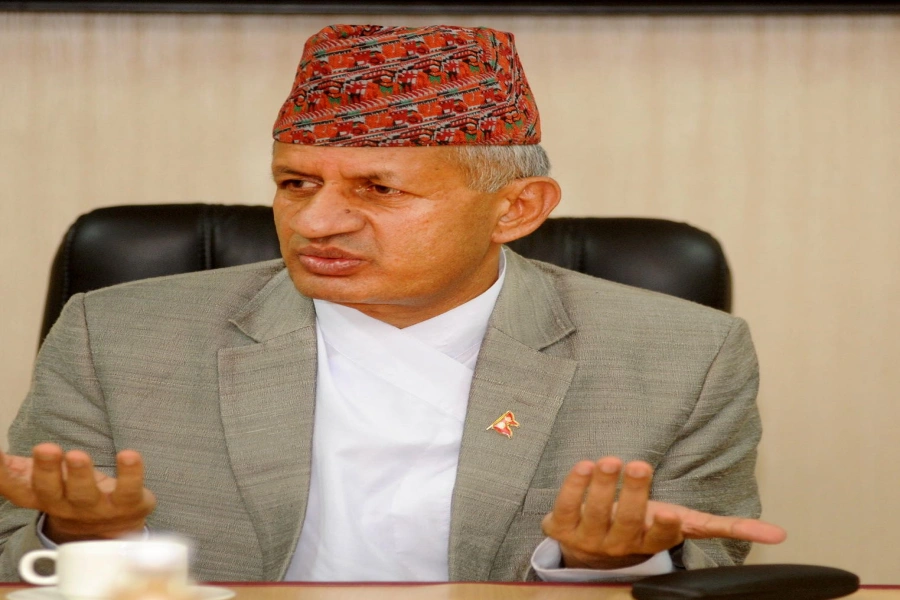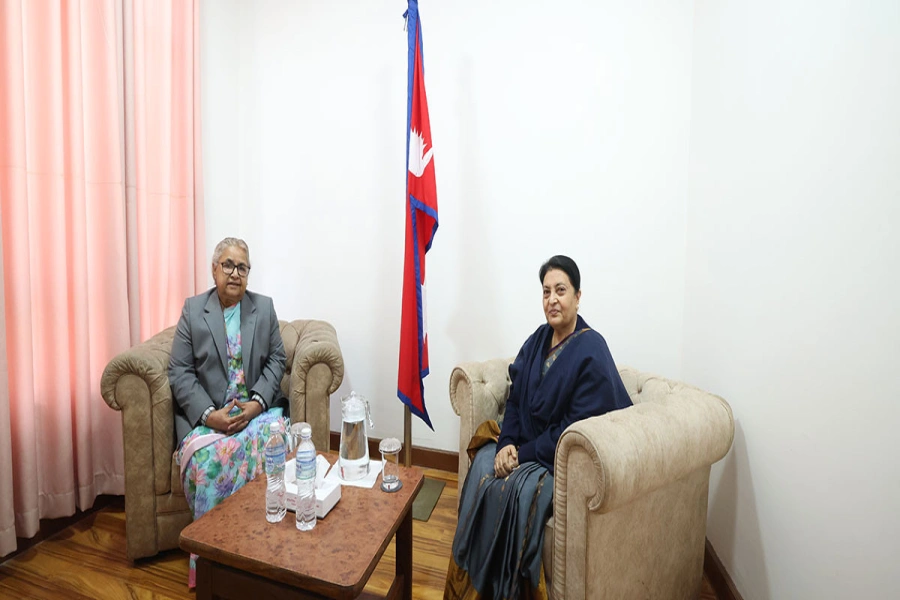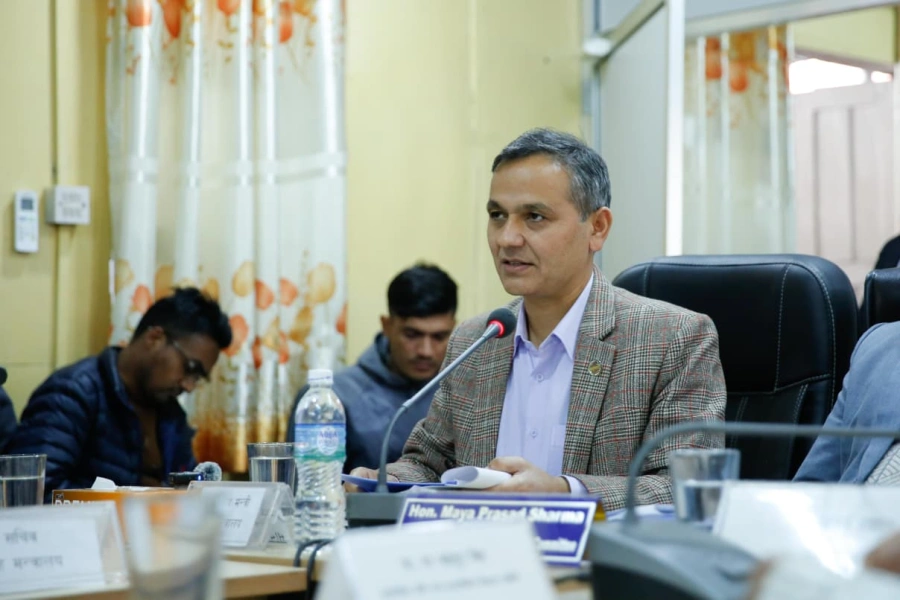By the time Foreign Ministry refuted the report of land encroachment by China, the ‘fake’ report had been circulated for over a year and reached over millions and millions of readers.
Let me begin with the most recent incident. On July 17,a video showing a youth (said to be a Nepali) being tonsured and forced to shout ‘Jai Shri Ram’ and ‘death to Nepal PM’ appeared in social media. The Indian men, in the video, wrote ‘Jai Shri Ram’ on shaved head of the youth.
Soon the video, shot in Varanasi, went viral in Nepali news portals and social media. We responded with rage: How can Indian people descend so low? We fumed. We demanded that Nepali ambassador in New Delhi did something about it. Soon Nilambar Acharya spoke to the Chief Minister of Uttar Pradesh.  The police began investigation and it turned out that the person said to be a Nepali was not a Nepali in fact and that he was bribed to play that role by a group of fundamentalists. We later learned that some fundamentalists were trying to spread hate against Nepal and Nepalis, angered by Prime Minister Oli’s uncalled for statement suggesting that Lord Rama was born in Nepal and Ayodhya, the birthplace of Rama, also falls within the Nepali territory.
The police began investigation and it turned out that the person said to be a Nepali was not a Nepali in fact and that he was bribed to play that role by a group of fundamentalists. We later learned that some fundamentalists were trying to spread hate against Nepal and Nepalis, angered by Prime Minister Oli’s uncalled for statement suggesting that Lord Rama was born in Nepal and Ayodhya, the birthplace of Rama, also falls within the Nepali territory.

Screenshot image of the youth who was tonsured and who was first said to be a Nepali.
Emotions were running high in Nepal. Some began to say Indians living in Nepal should be given a ‘tit-for-tat’ treatment.
If some ill-intentioned people followed this ill advice and started offending Indian citizens in Nepal, it could invite a dangerous situation. This is the time when India-Nepal relations are said to have fallen historic low. A single word of hate and insult against people and government of the two countries can trigger dangerous deterioration of relations.
But by the time the truth came out about that video, the news had already been covered by a number of Nepali and Indian media outlets, including The Times of India,opindia.com, The Hindustan Times,thequint.com and The Indian Express, to mention a few.
The readers and viewers of this news in India may still be thinking that the man shaved and humiliated is a Nepali, some perhaps with sense of schadenfreude too.
In recent times, reports with exaggerated and imaginary details about Nepal are making rounds in India. On and off, some Indian media report that Nepali security persons are killing the Indian citizens, Nepal is positioning its Army in the frontiers to pick war with India and so on.
Also there have been instances of spread of utterly misleading and fake reports regarding China, Nepal and the US, most of them originating from Nepal. This article looks into a couple of representative cases and argues that unrestrained fake media contents could jeopardise our relations with foreign countries—notably India, China and the United States.
Go back China
This starts with what looks like a leaflet-like page issued by Department of Survey of Ministry of Agriculture. On the top of the page is our national emblem. The subject of the report, I wonder if it can be called one, is ‘some difficulties witnessed in Nepal’s northern border points.’ The content says that Nepal has lost 36 hectares of land to China's Tibet due to expansion of roads by China in Tibet and erosion caused by rivers flowing to the south from the north.
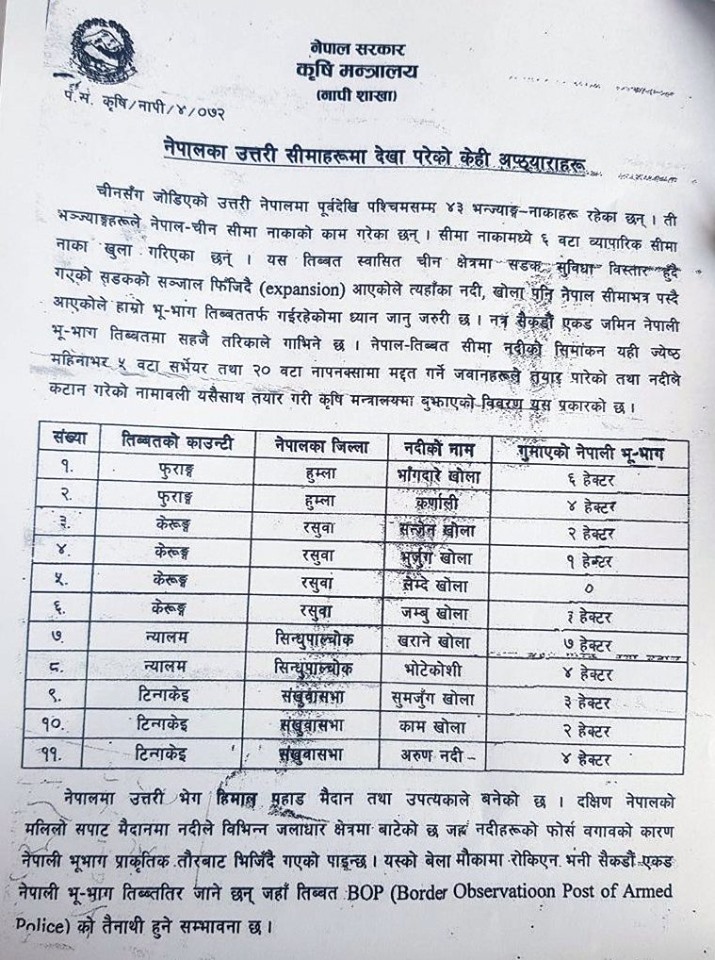
Dodging Fake News on Social Media

A document claiming Nepali land encroachment by China. Ministry of Agriculture and Livestock Development on June 25 issued a statement saying that such a report has never been published by the ministry and the news reports based on this bear no truth in them. All news reports on encroachment story have cited this document as evidence.
It’s hard to trace when it actually began (blogger Salokya has done a good study on it and I derive some information for this article from his blog), but it comes out firston May 31, 2019, in Nepal News, which is quickly followed by Hamrakura.com on June 2.
For about four months, this issue almost disappears. On November 7, 2019, however, it reappears in Khabarhub.com which states that China has encroached upon around 36 hectares of Nepali land in Nepal’s Sankhuwasabha, Rasuwa, Sindhupalchowk and Humla districts. “China, too, has encroached upon Nepali land,” says the headline citing “survey department.”On November 8, it appears again in Thahakhabar, followed up by Pahilopost on November 14, with additional information of Nepalis launching protest against China for encroachment of Nepali land.
On November 8, 2019, online version of Nagarik carried this report, followed by Annapurna Post on November 9 (Nagarik removed this ‘inadvertently published content’ from its online page, as explained by its editor Gunaraj Luitel).
On November 10, the same online newspaper (Khabarhub) gave a ‘backoffChina’ twist to the encroachment subject. It said that social media including Twitter and Facebook are flooded with “BackOffChina” hashtag and that Nepal Students Union, a student wing of Nepali Congress, also chanted slogans against China and India in Kathmandu.
By November 13, according to Khabarhub, protests against China were intensifying in Nepal “against the encroachment of Nepali land by China.” In a protest staged in Kapilvastu, Chinese President Xi Jinping’s effigy was burnt, it said. It further said “the protest comes after a survey report recently released by the Survey Department stated that China has encroached upon 36 hectare land of Nepal.”
This went all over India too. On November 8, 2019, ANI published the news which was republished in several other outlets. Citing this report, The New Indian Express reiterated the same message on its November 8 news. The Hindustan Times, too, did the same on its November 12, 2019 news, followed by The Times of India’s coverage on November 13. On November 12, 2019,The South China Morning Post also published it.
The month November is significant here because it was on November 2 that India had published the new political map including territories of Lipulekh, Limpiyadhura and Kalapani into it and this had become a major irritant in Nepal-India relations. Across the country, sentiments were building up against Indian government and Indian move was being seen as an act of cartographic aggression.
‘Fake’ news returns
The report of alleged encroachment of Nepali land by China, based, again, on the same leaflet-like page ‘issued’by Ministry of Agriculture makes a comeback in June. On June 21, Annapurna Post published the report that China has been occupying entire Rui village of Gorkha district for the last 60 years. This news was quickly picked by Khabarhub.com on the same day. “Rui Gaun: Nepal’s land under Chinese control. The land is under Chinese control for more than 60 years,” it said.
Bimalendra Nidhi, Nepali Congress leader, former deputy prime minister and home minister, tweeted on June 23 stating that China has occupied 33 hectares of Nepali land in Humla, Rasuwa, Sindhupalchok, including Rui village of Gorkha. He wrote that Chinese Army will be coming to Nepal in the name of corona assistance and teaching Chinese language and then demanded explanation from the government over this matter.
Like in November, 2019, the news was quickly picked by big Indian media. On June 23, The Hindustan Times, citing Nepal’s agriculture department, reiterated the encroachment story and said that China could set up border outposts in encroached territories. The story was covered by The Quint and The Eurasian Times on June 23.
It was not until June 24, 2020 when Kantipur published the report of encroachment, that it gained the wider currency and became the political issue in Nepal. The Times of India (on June 24), Zee News India (on June 24) and OpIndia on June 25 had also published the report. By then, some Nepali Congress lawmakers had registered a motion in the parliament against land encroachment by China.
We came to know that Department of Survey of Agriculture Ministry, attributed as the sole source of China encroachment claim and cited by every outlet, does not actually exist and that the whole report was fake only on June 25, when Nepal’s Foreign Ministry and Ministry of Agriculture and Livestock Development refuted the claim of all media reports and appealed the media to “verify the information from the relevant authorities before commenting on such sensitive matters which may adversely affect the relations between the two friendly neighbours.”
But by then the ‘fake’ report had been circulated for over a year and reached over millions and millions of readers. It was used and reused multiple times by various news sites. It was first brought out by one news site, which was picked by another citing the first as the source and then it became a copy of a copy of a copy in such a way that it was nearly established as the truth.
However, none of the Western media or the media outside of Nepal and India—except The South China Morning Post—are found to have carried this report.
But given the number of followers (readers and viewers of the papers which followed China encroachment story), it can be fairly said that many still believe China has encroached on Nepali territory but Nepali authorities are unwilling to take up the matter with China. There may also be people who believe in Zee News channel's video report suggesting that Prime Minister Oli and Chinese Ambassador to Nepal are in amorous relations and she is dictating terms on Nepal and the report related to Nepal PM having millions of dollars in Swiss Bank.
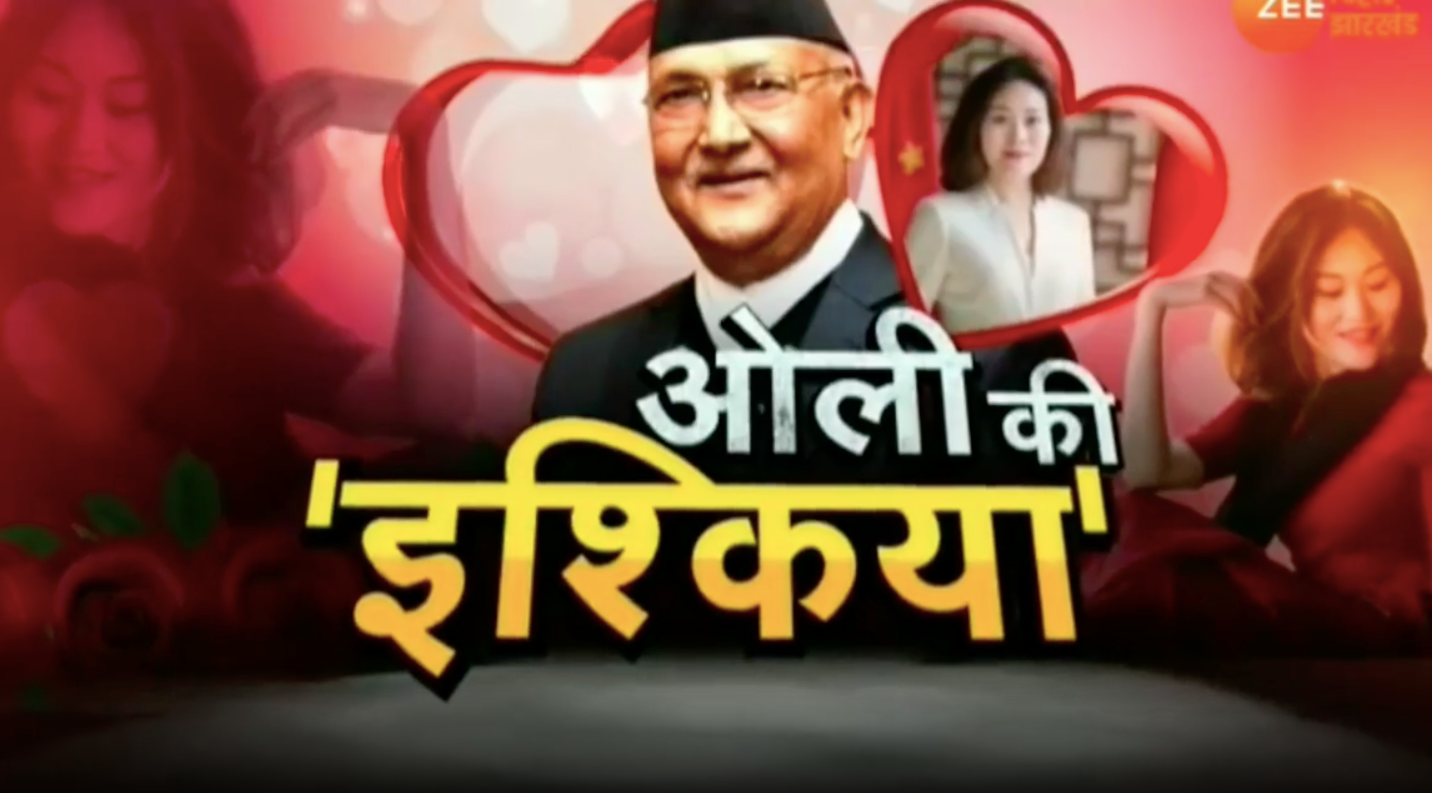
Screenshot image of Zee News report which projects PM Oli and Chinese Ambassador to Nepal HouYanqi as being in amorous disposition.
What’s the lesson?
There is no question that the leaflet-like page—which was cited as the authentic proof for China encroachment story—was fake. But why did not Nepali and the Chinese authorities issue rebuttal while a dangerous claim of land encroachment of Nepal was making rounds for over a year in both Nepali and Indian media? Or was the report not fake?
If the authorities had countered the claims right then and there—say, in May or November, 2019—the fake report could have been stopped at that point. When the responsible authorities stand quiet the fake news travels fast and flourishes. The government of Nepal has promised to identify the wrongdoers and punish them. Let’s see whether it will.
But the fake report, if indeed it is fake, on Chinese encroachment of Nepali territory is the example of how the media can be used as a means to spread hate and negative impression about our neighbours. It is also an example of how a fake report becomes mainstream, and then almost goes global.
There have been misleading reports about the US as well. If you recall how Nepali media reported the news of the meeting Foreign Minister Pradeep Gyawali with his American counterpart Mike Pompeo in Washington in December, 2018, you will get what I mean. They had actually “discussed Nepal’s $500 million Millennium Challenge Corporation compact; Nepal’s central role in a free, open, and prosperous Indo-Pacific” among others.
Back home it was reported to mean America “seeking” and “asking” Nepal to play a central role in the Indo-Pacific Strategy and Nepal agreeing to play a central role or come under America’s Indo-Pacific Strategy radar.
You get to watch highly exaggerated claims about MCC grant in various You Tube channels and some online portals with considerable number of followers and viewers. One YouTube video, for example, which has over 10,0000 views, says if MCC becomes successful, America will station up to 10,000 troops in Nepal’s Chitwan, Palpa and upper Mustang. Such videos reach the Facebook pages of millions of people in Nepal. This may be the source of the understanding of general Nepali public that MCC is indeed a dangerous project for Nepal.
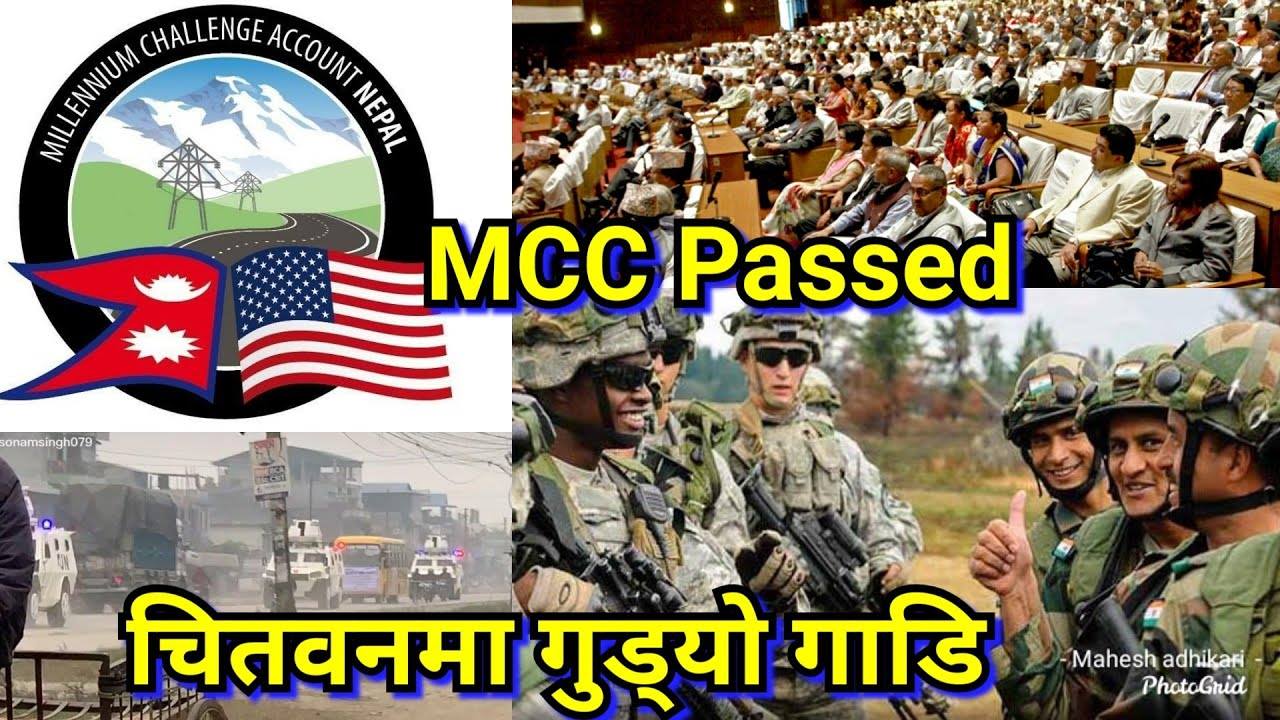
Screenshot image of MCC linked with the US military
One can imagine how the report that under MCC the US will set up a military base in Nepal and that therefrom launch missiles to attack China may have originated. It requires a separate observation but it can be speculated: A little known news portal may have first carried that report, which was picked by others and spread in the social media. Now American military will come to Nepal if Nepal endorses MCC is regarded as a true proposition by many Nepali people.
Media should care
Imagine. One little known news portal, citing a dubious source, reports that the US is actually building up its military base in Mustang to fight China and India is also into it. And this fake report is picked by mainstream dailies in India, Nepal and China. This will add public pressure on the governments to do something in response, which, if they do, will pit them against each other.
Or suppose this. One newspaper reports, again by citing a dubious source, that Nepal, together with China, is reinforcing its military presence on the frontier targeting India. What kind of message will it send to India?
In Nepal, as the public trust in the government is fast eroding, any bad deeds can be imputed to China, the US and India and it can be easily believed in.
Now because of growing hostility between China and the US and between India and China, these three countries obviously would like to see the media narrative built in their favour. Efforts might be made to keep Nepal on their side or force Nepal to deviate from its long-held non-alignment and neutral policy.
These are extremely sensitive times for the geopolitics (think of China-US cold war, India-China hostility and Nepal's souring ties with India). In such times, media need to act responsibly because they can play fundamental role in shaping public opinion, building pressure on the governments to deescalate the tensions and go for reconciliation. This is the reason I have been advocating for media unity on fundamental questions of Nepal’s foreign policy matters.
We have to report the truth and call spade a spade. This is important because in what has been called the age of post-truth, truths can be presented as falsity and falsity as truth and we tend to believe in falsity rather than truths (I have fallen victim of this malady a couple of times only to realize later with utter embarrassment). Anything can be manufactured, shared, made mainstream and spread to global audience and we may come to know about the veracity of the information only after much damage has been done or our perceptions firmly set.
These are bad times for journalism in Nepal. Many media persons have lost their jobs, others feel extremely disincentivized to write and report due to being unpaid or untimely paid: Perfect situation for interest groups to fiddle with truths.
One fake report can irreparably break cordial relations between the countries. One true report can also contribute to maintaining amity.
I rest my case here.

















